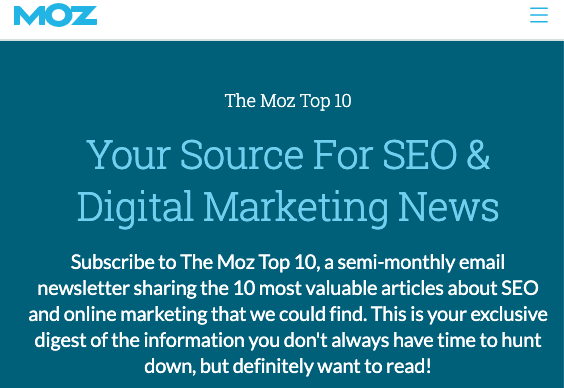
Newsletters have been around for decades, but they are more essential than ever for B2B companies in 2023. In this blog post, we’ll explore why newsletters should be a key component of your B2B marketing strategy, and highlight the types of newsletters that B2B buyers love to receive.
With so many channels vying for attention, cutting through the noise and connecting with your audience can be tough. But newsletters offer a unique opportunity to deliver valuable content directly to their inbox on a regular basis. By providing helpful information, industry insights, or even company updates, you can build trust with your readers and position yourself as a thought leader.
So what types of newsletters do B2B buyers want to receive? We’ll dive into some examples of successful newsletter formats that are sure to engage your audience. From curated roundups of industry news to deep dives into relevant topics, there’s a newsletter style out there for every business.
So if you’re not already incorporating newsletters into your marketing mix, now is the time to start. Let’s explore how this simple yet effective tactic can help you reach new heights in 2023 and beyond.
Today there are too many new tools and platforms emerging daily and your brand will most likely not be remembered. But newsletters offer an opportunity to deliver valuable content directly to your clients’ and prospects’ inboxes regularly.
By providing helpful information, industry insights or even company updates, you can build trust with your readers and position your company and yourself as a thought leader.
Not only do newsletters help keep your brand top-of-mind with clients and prospects, but they also offer several other benefits:
Now that we’ve established why newsletters are essential, let’s dive into some examples of successful newsletter formats that are sure to engage your audience:
Offer a selection of relevant industry news or company updates that your readers may find interesting. This type of newsletter format is perfect if you’re short on time but still want to provide value to your subscribers.
For example, HubSpot’s “Marketing Blog” features a weekly roundup of their best blog posts from the week called “The Marketing Update.” The update includes links and summaries for each post along with an eye-catching graphic.
Focus on one specific topic or trend relevant to your industry and provide deep insights or analysis. This type of newsletter format works best when you have original research or data to share.
For example, CB Insights publishes a weekly newsletter called “The Weekly Brief,” which analyzes trends in venture capital funding and emerging technologies.
Provide helpful tips, tricks, or guides to help your readers solve problems or improve their businesses. This type of newsletter format is perfect for positioning yourself as an expert.
For example, Moz publishes a monthly newsletter called “The Moz Top 10” featuring their ten most popular blog posts from the month and educational resources such as webinars and eBooks.
If you’re looking for a way to keep existing customers engaged, a great format you can use is one that gives your customers the low down on new product updates, features or services.
For example, Slack sends regular product updates highlighting new features such as improved search functionality or integrations with third-party apps.
Here are some list real-world examples from successful B2B companies that use these newsletter formats effectively
Curated roundups of their best blog posts from the week with an eye-catching graphic.
HubSpot’s “Marketing Blog” is a compelling newsletter example that delivers curated and valuable content directly to users’ inboxes on a regular basis. This type of newsletter format is perfect for those who are short on time but still want to provide value to their subscribers, making it an effective way to keep customers informed and engaged.
What sets HubSpot’s “Marketing Blog” apart from other newsletters is its eye-catching graphic that draws readers in, making them more likely to engage with the content. With this approach, businesses can easily build trust with their readers while positioning themselves as thought leaders in their space.
Detailed analysis on trends in venture capital funding and emerging technologies
CB Insights’ “The Weekly Brief” provides a comprehensive look into venture capital and emerging technology trends. It offers deep insights, original research data and in-depth analysis on the latest developments in these industries. With this newsletter, companies can stay ahead of the curve to gain a competitive advantage. The personalized nature of this newsletter allows readers to keep up with content tailored to their interests or behaviors, making it an effective way to engage them. Additionally, businesses can easily track their newsletters’ performance with metrics such as open rates and click-through rates available at hand.
Ten most popular blog posts from the month along with educational resources such as webinars and eBooks
Moz’ “The Moz Top 10” is a monthly newsletter that provides readers with the ten most popular blog posts from the month along with educational resources such as webinars and eBooks. This type of newsletter format is great because it helps the readers get up-to-date on the latest industry trends and news, while also giving them valuable insights into the topics so that they can look smart amongst their colleages. What’s unique about this particular example is that Moz includes additional educational resources to support its content – making it easy for readers to dive deeper into their favorite topics or areas of interest.
Highlights new features such as improved search functionality or integrations with third-party apps.
Slack’s product update emails are a great way to keep customers informed and engaged with the newest features, services, and integrations. These emails feature detailed descriptions of the latest releases and updates, along with helpful screenshots and visuals that make it easier for customers to understand their functionality.
With these emails, users can stay up-to-date on new functionalities, such as improved search capabilities or third-party app integrations that make your workflow more efficient. These updates also allow users to identify gaps in their operations, helping them make smarter decisions about utilizing Slack tools. Plus, by highlighting the latest advancements in one place, customers can get an overall picture of all of Slack’s offerings – making it easy for them to maximize the value of their experience with the platform.
Regular updates offering curated articles, case studies, and experiences related to startup success.
Pipedrive’s Startup Newsletter is a great example of an effective newsletter format. It provides curated content specifically tailored to entrepreneurs and startups, such as tips on how to scale quickly and efficiently and information on the latest trends in venture capital funding. The newsletter also offers insights from industry experts and covers topics ranging from customer acquisition strategies to hiring best practices. What makes Pipedrive’s startup newsletter unique is that it dives deep into topics that are relevant to entrepreneurs and provides actionable advice rather than just general information. This helps readers stay up-to-date on industry trends while at the same time offering practical advice they can use right away.
Weekly insights on enterprise technology topics relevant to CIOs.
Gartner’s “CIO Dashboard” is an innovative newsletter format designed to provide CIOs with valuable insights and actionable advice on the latest trends in technology. This comprehensive news digest features informative articles, interviews, and case studies from industry leaders who have seen success within the tech space. The Dashboard also offers interactive charts that make visualizing data and tracking key performance metrics easier. With this tool, CIOs can quickly get up-to-date information on the hottest topics in IT, helping them stay ahead of their competition.
What sets Gartner’s “CIO Dashboard” apart is its ability to synthesize complex topics into easy-to-understand graphics and give readers concrete strategies for improving their operations!
Monthly newsletter providing valuable content for small businesses with real-world examples from successful B2B companies that use these newsletter formats effectively.
Oracle NetSuite’s B2B newsletter is an effective example of a thought leadership strategy. Each week, readers are provided with insights from industry leaders on the latest topics related to cloud technology and ERP systems. The unique format keeps readers engaged by sharing actionable steps that can be taken right away to apply the learnings discussed in each article. Moreover, it also offers webinars and e-books as additional learning resources give subscribers useful information they can use every day in their business operations.
To create effective B2B newsletters that engage subscribers, here are some best practices:
Segmenting your list is essential to creating effective B2B newsletters, as it enables you to send tailored messages based on subscriber interests. By doing so, you can ensure that each subscriber receives content specific to their needs and preferences. Furthermore, segmentation can help increase engagement with subscribers and make your newsletters more impactful.
Personalizing your B2B newsletter content is an effective way to create meaningful connections with subscribers. By using subscriber data such as their name or location, you can make your newsletters more personalized and engaging. Furthermore, personalization can help build trust between you and your readers and give them a reason to stay subscribed. Moreover, personalization can also help create a sense of exclusivity and make your subscribers feel more valued and appreciated.
Keeping B2B newsletter content brief but informative is essential for creating engaging, effective content. Content creators must be conscious of their readers’ short attention spans and strive to create a message that is both concise and impactful. To do this effectively, content should be written in an easy-to-digest style with higher semantic richness to draw attention and increase CTR.
Including clear call-to-action (CTAs) in a B2B newsletter is essential for engaging subscribers and driving conversions. By providing a clear, actionable next step after reading each article, content creators can increase the likelihood of readers taking action. For example, if an article discusses the benefits of a certain software solution, then a good CTA would be to asking for a demo right inside the newsletter.
Testing variables in a B2B newsletter effectively determine what resonates with subscribers and ensures your newsletters are as impactful as possible. By running A/B tests on various aspects of your newsletter, including subject lines, messaging, and CTAs, you can gain insights into what works best for your audience. For example, you may experiment with sending newsletters at different times during the week or day to determine when subscribers are most likely to engage.
Newsletters should be an essential component of every B2B marketer’s toolkit in 2023 since they allow brands direct access straight into their target audience’s inbox while being cost-effective at the same time. Furthermore, Curated Roundups work well when pressed for time, while Deep Dives work well when sharing original insights; Educational Content provides value by positioning oneself as an expert, while Product Updates drive engagement.